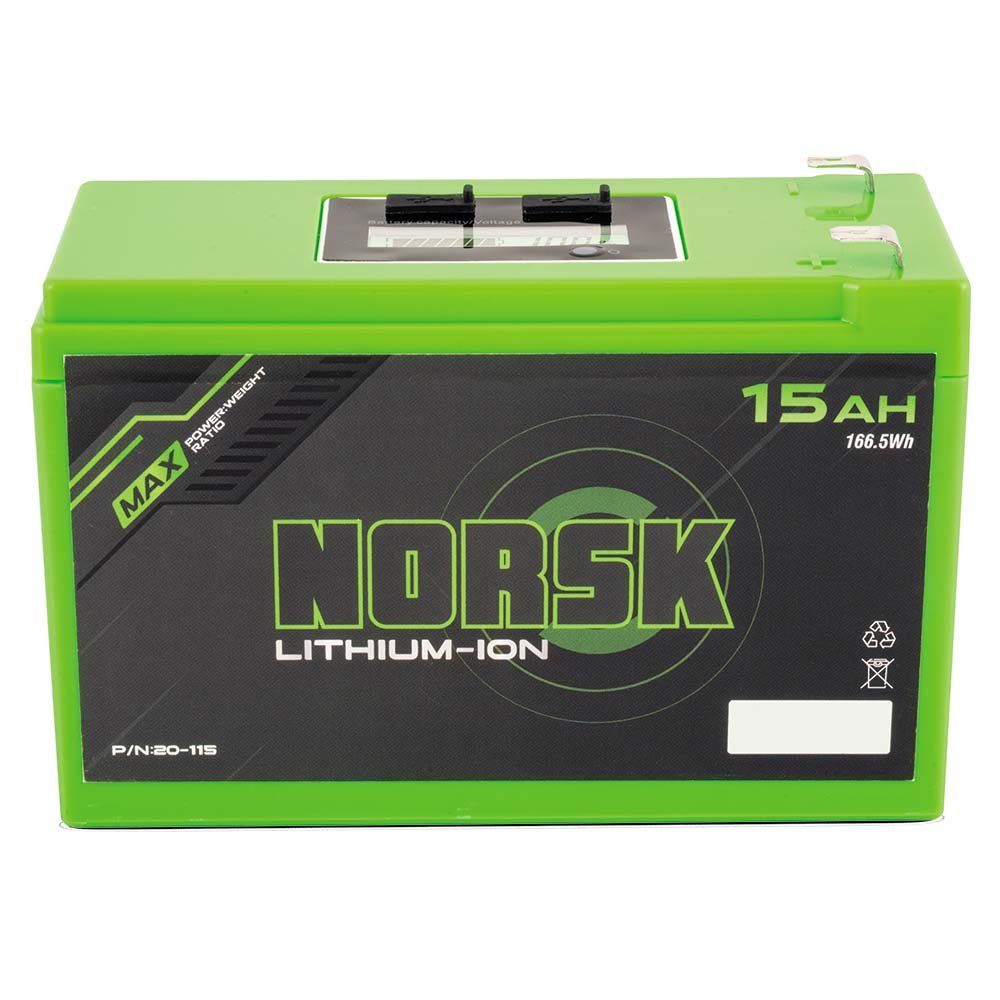What Battery Do I Need For My Kayak?
If you have not noticed yet, the world has discovered and embraced the possibilities of modern battery technologies. Smaller and more powerful batteries have found their way into the transportation and consumer product industries like never before. Corded power tools are being replaced by battery operated versions where only the constant power of the wall outlet would have been considered historically. Lawn and garden equipment have begun to transition to the point that now even riding mowers are a viable option. So it is no surprise that kayak enthusiasts have started to take notice of the technology.
The main problem for many of us is that electricity can often seem to be spoken in a foreign language. Our hope with this blog is to bring all of the information into one easy to understand summary so you can confidently know what battery you need for your kayak.
Battery Types
Lead Acid Batteries
The lead acid battery would be the battery we grew-up on. They function by submersing lead plates in a sulfuric acid bath and as such, the plates have to remain submersed in order to function. The reaction of the lead plates and sulfuric acid can cause the water inside a lead acid battery to be lost and it has to be maintained at all times. Typically a lead acid battery will last 2-5 years before needing to be replaced and that is considered a short lifespan in terms of battery life. They are however one of the most economical battery choices available for kayakers.
Pros
Economical choice
Cons
Maintenance required
Short lifespan
Effected by temperature
Must be mounted horizontally due to internal fluids
Size and weight
Extended charge times
Lower efficiency
Reduced life-cycles or recharges
There have been some improvements to lead acid batteries over the years to overcome the issues above. Sealed versions are now available which eliminate the need to maintain fluid levels. This does however increase the cost of the battery and there is still some loss of fluids which shorten the life of the battery. Gel batteries will not be as effected by fluid loss and they do not require being mounted horizontally. They will however be the most expensive lead acid battery type. Gel batteries work fine in high temperatures unlike other lead-acid batteries. A gel battery will need to be monitored during charging to prevent damage and charge at a lower voltage which equates to longer recharge times.
Lithium Batteries
The lithium battery really is the technology that is making the conversion to battery power possible. They use lithium salt to more efficiently store electricity making them posses the highest storage capacity at the time of this blog. Lithium batteries will also charge faster and more efficiently while lasting 3-5 times longer than a traditional lead-acid battery. They are considerably lighter and require very little if any maintenance.
Pros
Size and weight
Long lifespan
Maintenance free
Can be mounted in any orientation
High storage capacity
Quick charging
Extended life-cycles or recharges
Cons
Expensive
Can be impacted by low temperatures.
The latest version of the lithium battery is the lithium iron phosphate battery, also known as LiFePO4 or LFP. The main benefit of the LiFePO4 is the increase in charging life-cycles. LFP batteries typically can be charged and discharged about 2,000 times before needing the replaced. They also have a lower depth of discharge which means they can be used to near empty without damaging the battery. Most LiFePO4 or LFP battery manufactures rate their batteries at 80% depth of discharge, and some 100% discharging without damaging the battery.
Technical Issues
So battery types are pretty easy to understand and we can relate most of it to a few basic characteristics like battery size/weight, maintenance, life span and cost. Obviously a smaller / lighter battery that produces more power and lasts longer lends itself to all of the new products we are seeing on the retail shelves these days. It also means you can finally add and power some much needed electronics on your kayak with one of these newfangled lithium batteries right? First we need to cover a few technical issues. How do you feel about math and word problems because there will be math involved.
Amp Hours (Ah)
When it comes to shopping for lithium batteries you will notice each has an amp hour rating or (Ah). This refers to the batteries storage capacity and how long the charge will last. The higher the Ah rating, the longer the battery will last. The higher the Ah the larger and heavier the battery will be. For the kayaker this means how long do I need power on a single charge, how much space do I have for the battery and how much additional weight can my kayak accommodate.
Let’s look at that in relation to a weekend camping trip (2-days) without access to electricity to recharge the battery.
Example Ratings
A lithium battery that provides 12v for 60Ah
A fish finder that consumes 1 amp per hour (1Ah) at max brightness
A 30 pound thrust trolling motor that consumes 25 amps per hour (25Ah) at full thrust
Example Usage At Full Power
As you are trolling around the lake moving from fishing hole to fishing hole for 2 hours total at full thrust you will have consumed 50 amp hours (2x 25Ah) leaving you 10Ah of additional charge. That allows for 10 hours (10x 1Ah) of the fish finder turned on at full brightness until the battery is completely discharged. That might be doable if you plan to fish 5 hours a day while camping.
Example Usage At Budgeted Power
You can extend or conserve power by operating your electronics at reduced rates. For example a trolling motor operated at 50% thrust uses 1/2 the rated amp hours. So you could operate your trolling motor for 4 hours (4x 12.5Ah) and consume the same 50Ah while still running the fish finder at full brightness. Reducing the brightness on the fish finder would save you some charge but the effect is not as dramatic as reducing the trolling motor.
That seems pretty straight forward right? You also need to account for some unknowns or things outside of your control. Forgetting to turn off that fish finder would cost you 12Ah if you come in at 6pm and discover it the next morning at 6am when you head back out. That could be 1 hour of trolling back to shore at 50% thrust but keep in mind that water currents may require more power from the trolling motor so at full thrust you may not make it back. For that reason is best to allow for some extra charge to cover the unknowns.
The best way to select a battery is to consider all of the electronics you plan to add to your kayak, find their Ah rating and then estimate how much they will be used. This is a lot easier to do if you have been kayaking for some time and know what a typically day on the water looks like. If you are paddling or pedaling non-stop, your trolling motor will be doing the same. If you paddle to your favorite fishing hole and drop anchor until the end of the day, then your trolling motor usage will be a lot less. We also recommend allowing for future power needs and upgrades when selecting a battery. The addition of a trolling motor will be by far the greatest power consumption item on a kayak and deciding whether or not your need one will probably decide the battery you will need. Most other items can be powered with a lot less capacity and cost.
Throwing the largest battery on your kayak may seem like the best solution but keep in mind they weigh more, cost more and are larger with increases in capacity. If you find that your battery is too small it is possible to add another battery and run them in parallel to increase capacity of run-time. This simply involves connecting the negative terminals to each other and the positive terminals to each other with only one positive and negative connected to your accessories. If you are limited by space, two batteries may fit better separately or even provide for better weight distribution.

